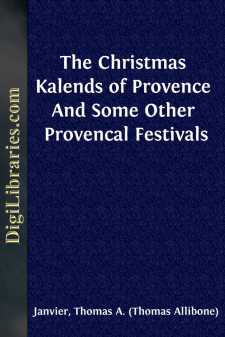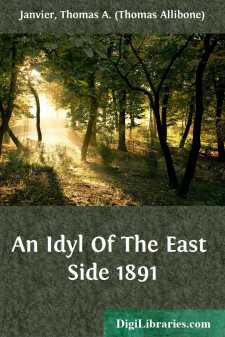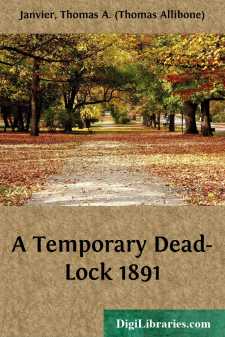Categories
- Antiques & Collectibles 13
- Architecture 36
- Art 48
- Bibles 22
- Biography & Autobiography 816
- Body, Mind & Spirit 145
- Business & Economics 28
- Children's Books 17
- Children's Fiction 14
- Computers 4
- Cooking 94
- Crafts & Hobbies 4
- Drama 346
- Education 58
- Family & Relationships 59
- Fiction 11834
- Foreign Language Study 3
- Games 19
- Gardening 17
- Health & Fitness 34
- History 1378
- House & Home 1
- Humor 147
- Juvenile Fiction 1873
- Juvenile Nonfiction 202
- Language Arts & Disciplines 89
- Law 16
- Literary Collections 686
- Literary Criticism 179
- Mathematics 13
- Medical 41
- Music 40
- Nature 179
- Non-Classifiable 1768
- Performing Arts 7
- Periodicals 1453
- Philosophy 66
- Photography 2
- Poetry 897
- Political Science 203
- Psychology 45
- Reference 154
- Religion 516
- Science 126
- Self-Help 85
- Social Science 82
- Sports & Recreation 34
- Study Aids 3
- Technology & Engineering 59
- Transportation 23
- Travel 463
- True Crime 29
Our website is made possible by displaying online advertisements to our visitors.
Please consider supporting us by disabling your ad blocker.
The Christmas Kalends of Provence And Some Other Provencal Festivals
Categories:
Description:
Excerpt
The Christmas Kalends
of Provence
I
Fancy you've journeyed down the Rhône,Fancy you've passed Vienne, Valence,
Fancy you've skirted Avignon—
And so are comeen pleineProvence.
Fancy a mistral cutting keen
Across the sunlit wintry fields,
Fancy brown vines, and olives green,
And blustered, swaying, cypress shields.
Fancy a widely opened door,
Fancy an eager outstretched hand,
Fancy—nor need you ask for more—
A heart-sped welcome to our land.
Fancy the peal of Christmas chimes,
Fancy that some long-buried year
Is born again of ancient times—
And in Provence take Christmas cheer!
In my own case, this journey and this welcome were not fancies but realities. I had come to keep Christmas with my old friend Monsieur de Vièlmur according to the traditional Provençal rites and ceremonies in his own entirely Provençal home: an ancient dwelling which stands high up on the westward slope of the Alpilles, overlooking Arles and Tarascon and within sight of Avignon, near the Rhône margin of Provence.
The Vidame—such is Monsieur de Vièlmur's ancient title: dating from the vigorous days when every proper bishop, himself not averse to taking a breather with sword and battle-axe should fighting matters become serious, had his vice dominus to lead his forces in the field—is an old-school country gentleman who is amiably at odds with modern times. While tolerant of those who have yielded to the new order, he himself is a great stickler for the preservation of antique forms and ceremonies: sometimes, indeed, pushing his fancies to lengths that fairly would lay him open to the charge of whimsicality, were not even the most extravagant of his crotchets touched and mellowed by his natural goodness of heart. In the earlier stages of our acquaintance I was disposed to regard him as an eccentric; but a wider knowledge of Provençal matters has convinced me that he is a type. Under his genial guidance it has been my privilege to see much of the inner life of the Provençaux, and his explanations have enabled me to understand what I have seen: the Vidame being of an antiquarian and bookish temper, and never better pleased than when I set him to rummaging in his memory or his library for the information which I require to make clear to me some curious phase of Provençal manners or ways.
The Château de Vièlmur has remained so intimately a part of the Middle Ages that the subtle essence of that romantic period still pervades it, and gives to all that goes on there a quaintly archaic tone. The donjon, a prodigiously strong square tower dating from the twelfth century, partly is surrounded by a dwelling in the florid style of two hundred years back—the architectural flippancies of which have been so tousled by time and weather as to give it the look of an old beau caught unawares by age and grizzled in the midst of his affected youth.
In the rear of these oddly coupled structures is a farm-house with a dependent rambling collection of farm-buildings; the whole enclosing a large open court to which access is had by a vaulted passage-way, that on occasion may be closed by a double set of ancient iron-clamped doors. As the few exterior windows of the farm-house are grated heavily, and as from each of the rear corners of the square there projects a crusty tourelle from which a raking fire could be kept up along the walls, the place has quite the air of a testy little fortress—and a fortress it was meant to be when it was built three hundred years and more ago (the date, 1561, is carved on the keystone of the arched entrance) in the time of the religious wars.
But now the iron-clamped doors stand open on rusty hinges, and the court-yard has that look of placid cheerfulness which goes with the varied peaceful activities of farm labour and farm life....












